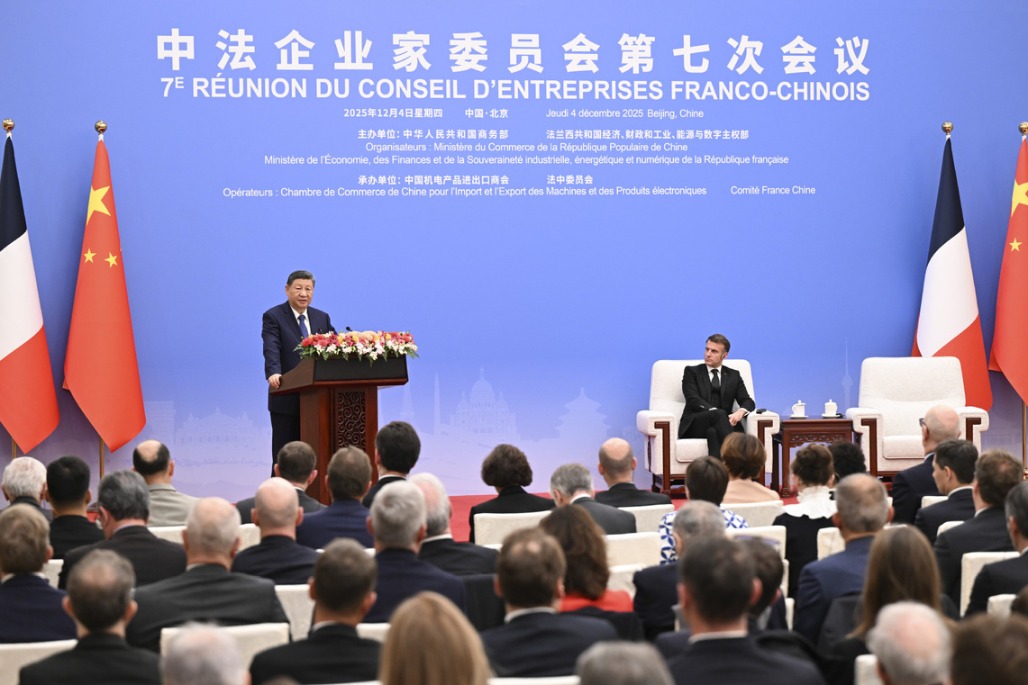Striving balance among great powers, China still priority for Central Asia
By Wei Wei | chinadaily.com.cn | Updated: 2023-05-19 09:00

The China-Central Asia Summit is taking place on May 18 and 19,which will add a new chapter in the development of China and the five Central Asian countries (Kazakhstan, Kyrgyzstan, Tajikistan, Turkmenistan and Uzbekistan).
The “C5+1” mechanism is not something new for the five Central Asian countries. They established ties under this framework not only with China, but also with Russia, the US, EU, India, Turkyie and Japan.
Interestingly, just before the China-Central Asia Summit, US Secretary of State Anthony Blinken started his first trip to Central Asia in late February and attended the first ministerial-level engagement of the C5+1 diplomatic platform in March. One month later, Assistant Secretary of State for South and Central Asian Affairs Donald Lu to Kyrgyzstan and Tajikistan, as a continuation of last year's visit to Kazakhstan, Turkmenistan and Uzbekistan. These actions demonstrated that the US is trying impose more influence on the region and “aims to pull ex-Soviet Republics from Russian, Chinese orbits”, as WSJ reported.
The Central Asian countries have been trying to achieve balance among the great powers and maintain friendly relations with them, but that doesn’t necessarily mean that the Central Asian countries treat the great powers all in the same manner. Deepening the relations with China is one of the top priorities for them.
Why not the US? The most important problem here is the lack of mutual trust or respect and sincerity from the American side.
The US wants to forge an image as a “reliable partner” for Central Asia, but during its involvement in Central Asian affairs in the past decades, strategic goals pursued by the US have always been to contain Russia, China and Iran; to integrate Central Asian countries into the Western liberal order and to shape their geopolitical orientation based on Cold War mentality. That’s why the US never ceases attempt to flare up riots and chaos and even “color revolutions” in this region.
Besides, US policymakers subconsciously view their interactions with major powers such as China and Russia from the perspective of a zero-sum game, ignoring their efforts to promote regional stability in Central Asia.
The US turns to Central Asia for its own geopolitical interests, the betterment of the people, the development of countries, or respect for the region seems to never be in the US’s consideration. The US even squandered Central Asian countries and now it is hard to get it back.
On the contrary, China not only respects the development paths chosen by Central Asian countries on their own, but also fully takes into consideration the interests of Central Asian countries in cooperation, no strings attached to economic cooperation and absolutely hasn’t and won’t interfere with their internal affairs.
The concept Silk Road Economic Belt , a significant part of China proposed Belt and Road Initiative (BRI), was first introduced to the world in 2013 when Chinese President Xi Jinping paid a state visit to Kazakhstan. Central Asian countries also voiced its prompt support for this initiative while others took the “wait-and-see” attitude.
The facts could tell that Central Asia’s support and positive engagement in the BRI is wise and fruitful. It not only helps landlocked countries in Central Asia gain access to the sea for the first time in history, but also promotes the development of complete industrial systems in these resource-based countries.
China hopes for the best for the region. Central Asia has always been strategically crucial to China as an important energy supplier and a pivotal corridor connecting Asia and Europe. Three countries among the five - Kazakhstan, Kyrgyzstan, Tajikistan – share a border with China of more than 3,000 kilometers. The stability of the Central Asian region is of great significance for maintaining China's domestic stability, especially in the northwest. It also plays an important role in fighting against the “three evils” - terrorism, separatism and extremism.
At the same time, China's strong foreign investment and service export capabilities are also needed by Central Asian countries. With the development of the BRI, learning Chinese and getting to understand Chinese culture is becoming a new fashion in Central Asia. In recent years, the number of international students from Central Asia in China has been increasing. The cultural exchanges will surely further promote mutual understanding between China and these countries.
China always treats its neighbors and partners with great sincerity, engages in cooperation based on the principle of mutual benefit, and advances regional cooperation with a more open mind and more proactive attitude. China’s initiatives can truly bring tangible benefits and win-win results. That is why China is and may very well continue to be the priority of Central Asian countries in the foreseeable future.
Wei Wei is the former chief correspondent of the Eurasian bureau based in Moscow of China Central Television, covering events in the states of the former Soviet Union.
If you have a specific expertise, or would like to share your thought about our stories, then send us your writings at opinion@chinadaily.com.cn, and comment@chinadaily.com.cn.
























